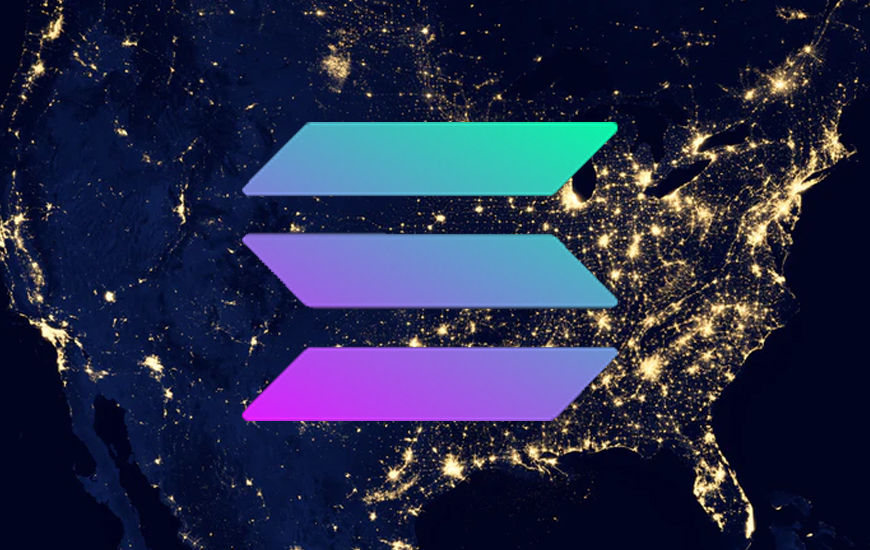- Solana, a cryptocurrency that debuted in April 2020 with little fanfare, has recently gone on a tear
- It’s an open-source initiative run by the Solana Foundation in Geneva
- Solana is a competitor to Ethereum, which is now the most popular decentralized app platform
Solana, a cryptocurrency that debuted in April 2020 with little fanfare, has recently gone on a tear. Its value has risen from around $1.50 in January 2021 to more than nearly $208 at the time of writing, giving it the world’s sixth-largest cryptocurrency with a market capitalization of $61 billion. On Friday, the cryptocurrency Solana (CRYPTO: SOL) is surging once more. SOL, the token, has risen around 12.6 percent in the last 24 hours, and its price has reached a new high in today’s trading.
So, what exactly is Solana?
Solana is a decentralized app platform built on the blockchain. It’s an open-source project managed by the Geneva-based Solana Foundation and developed by Solana Labs in San Francisco.
Solana competes with Ethereum, the world’s most popular decentralized app platform, by offering faster transaction times and lower transaction fees. It’s a Proof of Stake (PoS) blockchain, which means it’s less harmful to the environment than PoW (proof of work) blockchains like Bitcoin. Solana is the name of the native cryptocurrency, which bears the ticker SOL.
What makes PoS so appealing? Many computers (nodes) validate transactions in a decentralized blockchain system. In order to gain control of the network, a bad actor could wish to add a large number of nodes. You can prevent this by making the computers that run the network work hard by solving a math challenge, which makes attacking the network more expensive. That is proof of concept; it is effective, but the network may consume a significant amount of electricity.
Another option is to make validator nodes on the network have a stake in the network; in Solana’s instance, this means they must stake SOL tokens. While validators on the Solana network use energy to operate, it is much less than that used by Bitcoin miners, for example.
Validators or miners are rewarded in both PoW and PoS schemes; Bitcoin miners receive BTC, while validators on Solana are rewarded in SOL. End users don’t have to host a validator node to earn rewards on Solana; instead, they can delegate their stake to a validator who will pass the rewards on to them for a fee.
What makes it superior to other cryptocurrencies and blockchain technologies?
All of this sounds very similar to Ethereum, and Solana is best defined as an advanced Ethereum competitor. Why switch to Ethereum when there are so many more apps?
Ethereum has long been plagued by hefty transaction fees, which can run into the hundreds of dollars or even thousands of dollars, especially during periods of significant network congestion. Because Solana has a higher theoretical throughput than Ethereum (meaning it can perform more transactions per second), the fees are currently very low, often costing 0.000005 SOL (about $0.001).
In actuality, you can engage with the multiple apps there once you have a wallet that can handle SOL and Solana-based tokens, such as Phantom or Sollet. On a decentralised exchange like Raydium, you can trade one token for another, or you can buy an NFT on the Solanart marketplace. Whatever you perform on Solana, you’ll be charged the tiny fee described earlier, which seems reasonable when compared to Ethereum.
What’s the deal with Solana’s pumping?
The price of Solana has skyrocketed. SOL was purchased for $0.22 by someone who has participated in the Solana ICO (initial coin offering – a technique to crowdfund a business by selling project tokens). The cost of a single SOL has risen by 95,000 percent to $208 per unit.
Cardano, Polkadot, Dfinity, Terra, Polygon, and Avalanche, to name a few intriguing Ethereum competitors, have all had significant price increases in the last year or two. But Solana’s ascension has been remarkable.
The fact that Solana is backed by popular cryptocurrency exchange FTX, which has launched multiple Solana-based initiatives, is one reason for its growth. Along with Andreessen Horowitz and Polychain, Alameda Research, which also backs FTX, is one of the largest investors in Solana.
Then there’s the TVL (total value locked), a metric that measures how much value has been locked into Solana ecosystem initiatives. Solana is presently the third largest chain in terms of TVL, according to DefiLlama, a website that follows decentralised financial projects, with a total of $7.9 billion locked into the projects on its networks.

Andrew is a blockchain developer who developed his interest in cryptocurrencies while pursuing his post-graduation major in blockchain development. He is a keen observer of details and shares his passion for writing, along with coding. His backend knowledge about blockchain helps him give a unique perspective to his writing skills, and a reliable craft at explaining the concepts such as blockchain programming, languages and token minting. He also frequently shares technical details and performance indicators of ICOs and IDOs.


 Home
Home News
News










